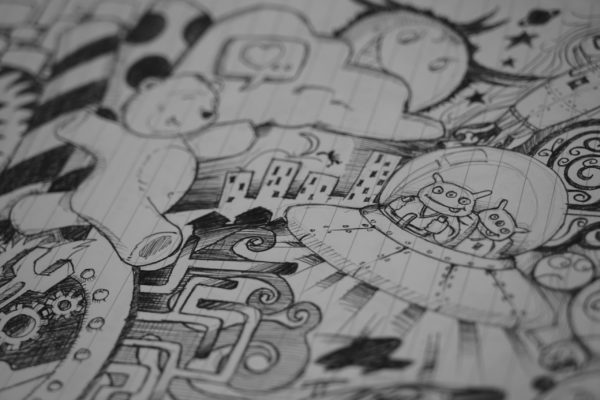Rivers, and generally freshwater, are one of the most important geological features of a world. As they shape the way cultures form, it’s crucial you get them right on your maps.
Over the course of the last few months, I’ve been looking at the art of maps. I’ve released an article on Hills & Mountains, Oceans & Seas, and finally Forests & Trees. In this continuation of the series, I’d like to look at Rivers & Lakes. As I said, freshwater shapes cultures. Major cities are often built on rivers, as they provide drinkable water, a source of food in fish, as well as a means of transportation.
Theory
There are two main rules you want to remember when you’re drawing your rivers. First, rivers always flow down. If gravity works on your world (which it probably does), rivers are not going to flow uphill – they’re going to flow from the mountains or other high-up points, down to the sea or ocean, which is the lower point.
Be sure to remember this as you draw the map. While it seems kind of obvious, it’s easy to forget. Make sure to know which points on your map are elevated, so you can draw rivers accordingly.
Second, rivers don’t split, they join. When looking at maps, you often see one river become two in a “split”. While that might seem like the river splitting, it’s rather being joined by another, smaller river. Rivers almost never split.
One exception to rivers splitting is deltas. A delta is the place where a river connects up to the sea or ocean. As the river brings bits of land with it, the earth sediments down at the sea, which creates little islands. Those, in turn, split the river. For an example of such a delta, look at the river Nile.
Deltas are not that common on Earth, but they can and do happen, so feel free to include one or two on your maps.
Rivers also form meanders, meaning they’re not straight lines, but form twists. An amazing example of this is the Amazon river.
Lakes form when a river flows into a sort of basin. They can often be a mid-point between the river’s source (mountains), and the sea.
Drawing
Now that you know how rivers and lakes flow and form, it’s time to actually draw your map.
Rivers can be represented by simple lines, which is ideal for smaller maps. If you want to, you can signalize the river’s direction by a little arrow somewhere next to it.
You can also draw larger rivers by drawing two parallel lines.
To symbolize the life rivers bring to their surroundings, you can draw three lines to form a bush next to the river. If you do that, it makes it really clear the line is a river, and that animals and people depend on it for the life it gives.
As I mentioned at the beginning, cities often form near rivers, because it brings water, food, and means of transportation.
Forests also grow near rivers. For this reason, I’d recommend you drawing the mountains first, then the rivers, and then the forests.


